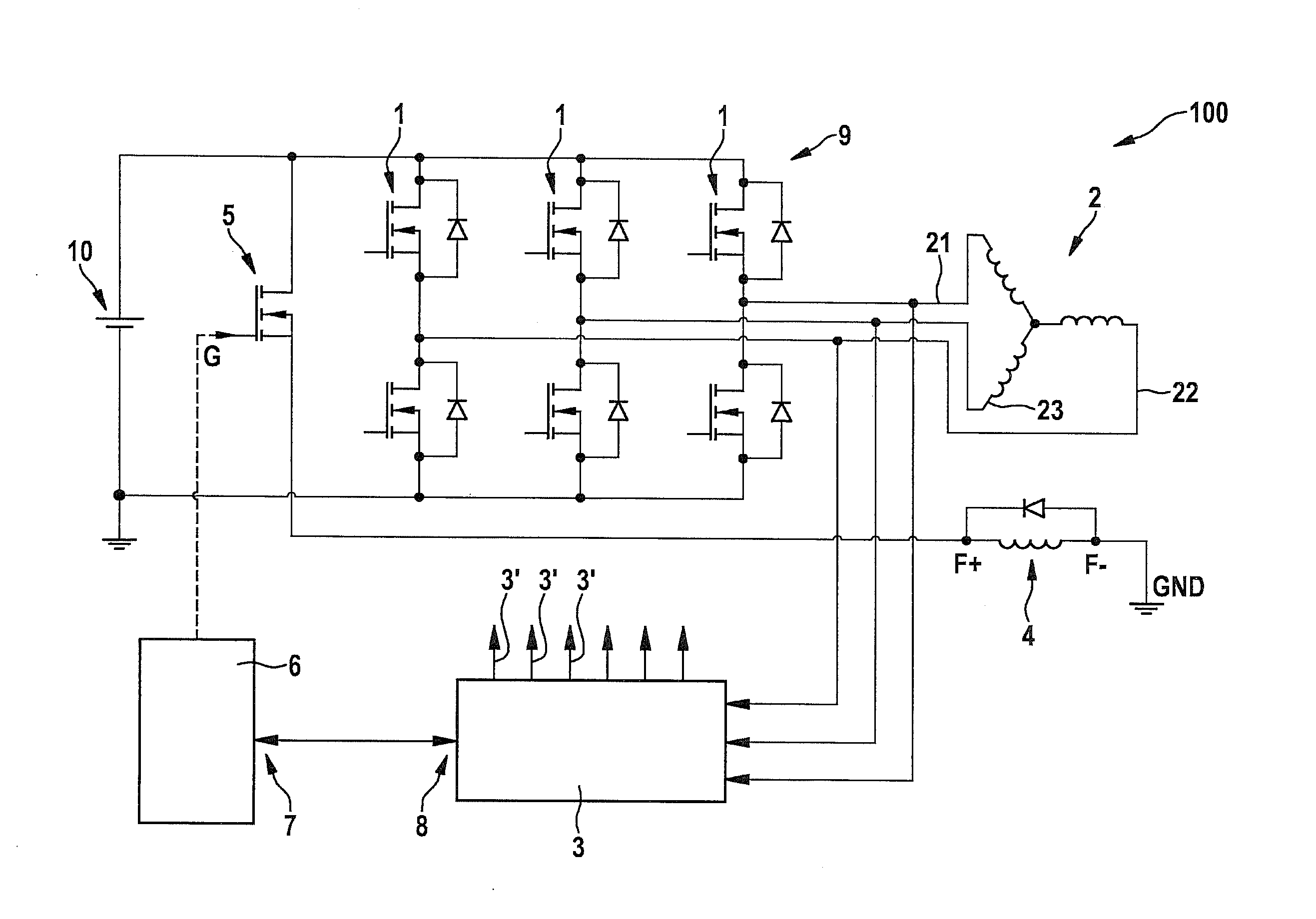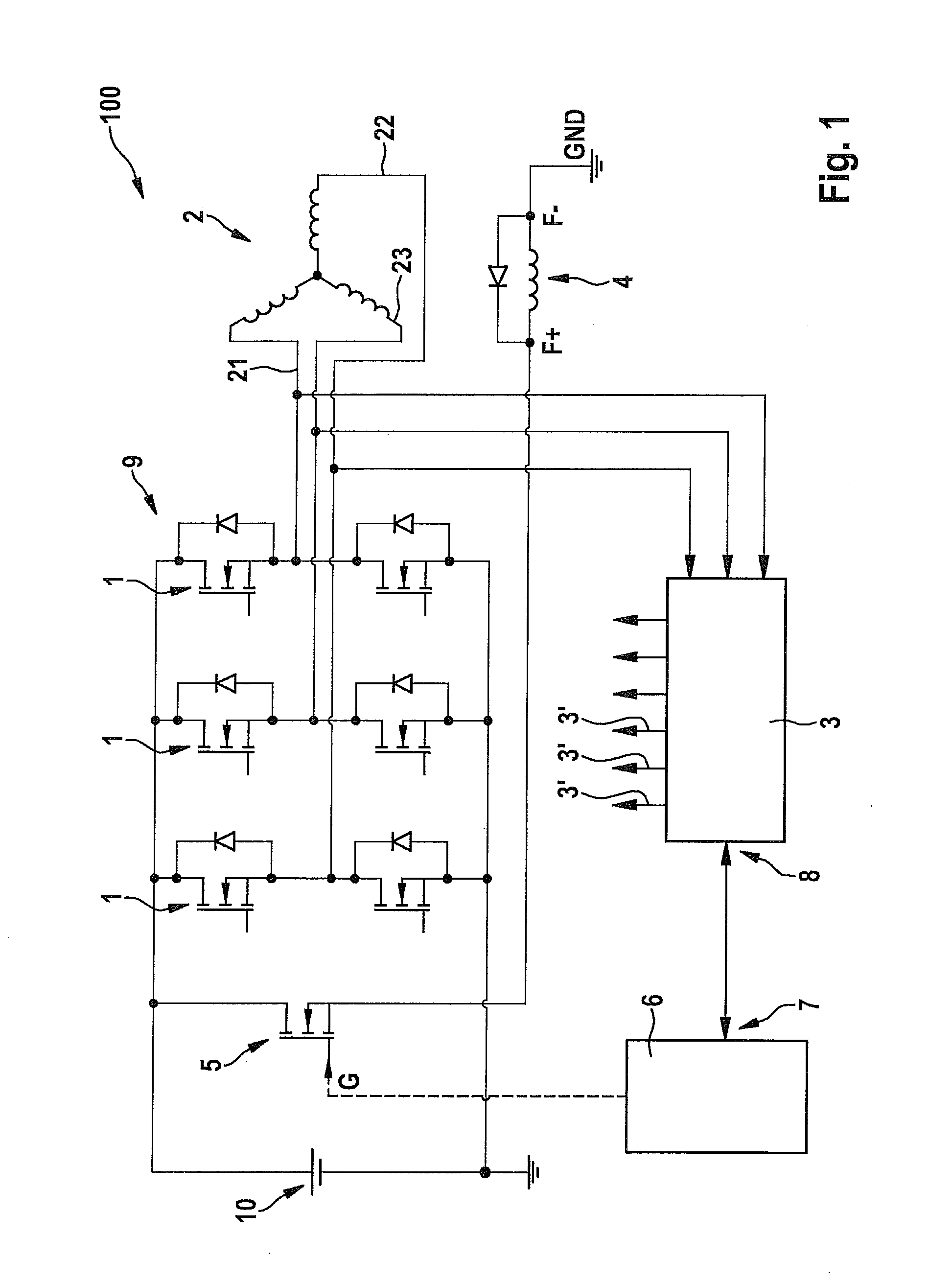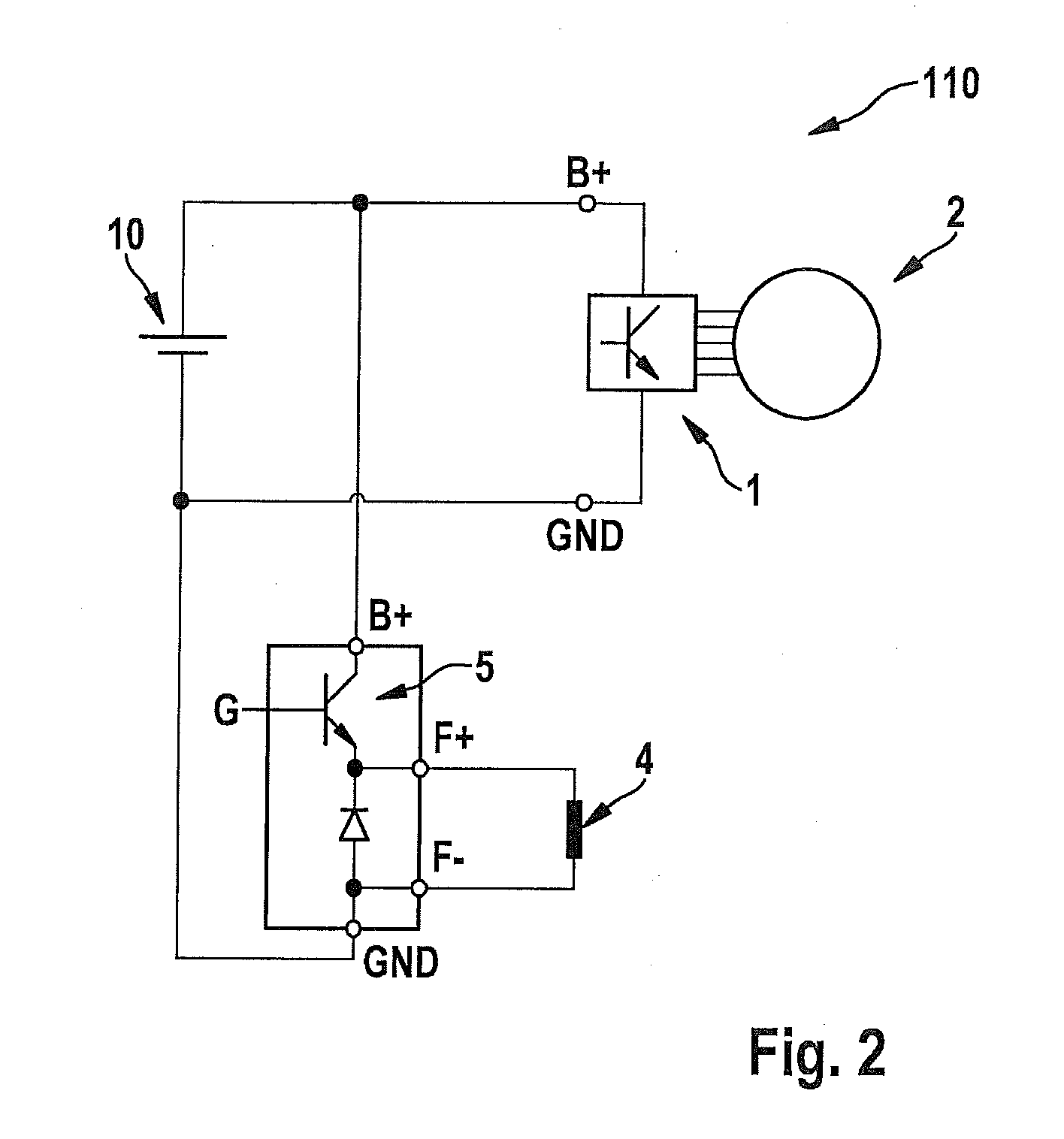Method for operating a separately excited electric machine in a motor vehicle
a technology of electric machines and motor vehicles, which is applied in the direction of electric generator control, generator control by field variation, dynamo-electric converter control, etc., can solve the problems of inability to use continuously at a higher current, unwanted voltage dips in the vehicle electrical system, and shorten the time for reaching the nominal current intensity. , the effect of preventing the flow of excess current through the rotor winding
- Summary
- Abstract
- Description
- Claims
- Application Information
AI Technical Summary
Benefits of technology
Problems solved by technology
Method used
Image
Examples
Embodiment Construction
[0032]FIG. 1 shows a circuit diagram of a starter generator of a motor vehicle operable in accordance with a specific embodiment of the present invention. The starter generator is denoted, on the whole, by reference numeral 100 and includes a stator 2 having three phases 21, 22, 23.
[0033]A rotor winding 4 is provided, to which a pulse-width modulated voltage signal of a voltage source 10, e.g., a battery, may be applied, using timing device 5, e.g., a suitable metal oxide semiconductor field effect transistor (MOSFET). To this end, timing device 5 is controlled, e.g., at a gate terminal G, by a control unit 6, using a control signal.
[0034]Control unit 6 may be connected to a rectifier control unit 3 via interfaces 7, 8; the rectifier control unit triggering active circuit elements 1 of a rectifier 9 via outputs 3′; the rectifier being connected to phases 21, 22, 23 of stator 2, e.g., in accordance with a rotor position. Active circuit elements 1 of rectifier 9 may also be correspond...
PUM
 Login to View More
Login to View More Abstract
Description
Claims
Application Information
 Login to View More
Login to View More - R&D
- Intellectual Property
- Life Sciences
- Materials
- Tech Scout
- Unparalleled Data Quality
- Higher Quality Content
- 60% Fewer Hallucinations
Browse by: Latest US Patents, China's latest patents, Technical Efficacy Thesaurus, Application Domain, Technology Topic, Popular Technical Reports.
© 2025 PatSnap. All rights reserved.Legal|Privacy policy|Modern Slavery Act Transparency Statement|Sitemap|About US| Contact US: help@patsnap.com



